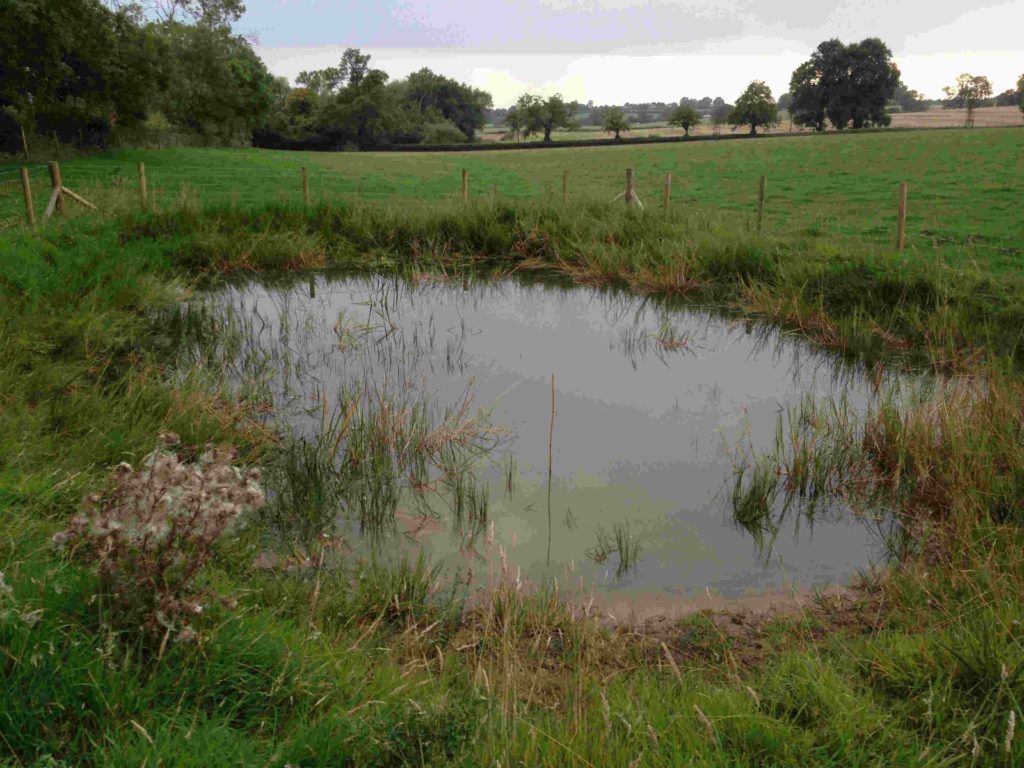Water Friendly Farming Update 2016
15th December 2016
Important new results from our Water Friendly Farming research show that farmers who create clean water ponds are making the countryside richer in freshwater wildlife

We already know that clean water ponds are outstanding freshwater habitats. Now new research from our Water Friendly Farming project suggests that in intensively farmed countryside, making new clean water ponds allows a wider range of freshwater plants to survive in the landscape than trying to clean up already polluted ponds, streams or ditches. This was the key finding in the latest results from our research project, published in November.
The Water Friendly Farming project is helping farmers decide how to manage their land to give the greatest protection to life in freshwater, whilst still farming commercially. The project is now one of Britain’s biggest experiments looking at how making changes to land management can help protect freshwater wildlife.

Keeping water clean enough for healthy freshwater communities in modern farmland is very difficult. Our research shows that in the typical lowland countryside, 90% or more of ponds, streams, ditches and rivers suffer damaging levels of pollution. Half of this is due to the polluted water washing of farmland, with the rest coming mainly from sewage works serving country towns and villages.
Most people trying to tackle the pollution of freshwater in the countryside so far have focussed on streams, assuming that these are the most important part of the rural water environment. We’re taking a different approach looking at all the freshwaters, including streams, ditches, rivers, and the most diverse habitats, the ponds. Unfortunately neither small streams or ponds are much helped by present water management laws, such as the Water Framework Directive, which specifically excludes ponds and gives little attention to the smaller running waters.

We’ve been assessing whether it’s better, for freshwater wildlife, to try to stop pollution, add new habitats by making ponds, or perhaps both. Although it might seem obvious that we should simply stop pollution, it’s not as simple to do this as it might at first seem. Not only is there a huge reservoir of pollutants in the landscape as a result of intensive farming over the last 50 years, particularly of the pollutants nitrogen and phosphorus, whenever you cultivate land, grow grass for large dairy herds or use fertilisers, a lot still leaks away or washes off the land when it rains. So making brand new habitats – which are clean from the start, in places where polluted water can’t get into them – looks like a good option. And this indeed seems to be the case – in some places we may be able to clean up pollution, but in most, with our present technology, we simply can’t get the water properly clean. If we farm in the modern way, we have to accept pollution.

Reducing the impact of the way we manage the land – cultivating it for crops like oil-seed rape, or growing grass to feed dairy cows – is one of the most difficult environmental problems. It’s hard to keep pollutants, like nutrients, sediments and pesticides, out of the water and despite a wide range of rules and regulations on farming, pollution from the land is very widespread. Lots of people are experimenting with changing ways of ploughing fields, reducing fertiliser use and trying to stop pollutants washing into the water – successes so far are modest.
Now it’s looking increasingly likely that in our modern intensive landscape – which we can’t simply stop farming – a good solution for ensuring the survival of many declining freshwater plants and animals is to ensure that we have a network of really clean unpolluted ponds. It’s a cheap and effective option which could see the countryside dotted once again with a network of wildlife-rich freshwater habitats.

You can read the 2016 report here. And find out how to create clean water ponds in our Pond Creation Toolkit.
The success of Water Friendly Farming is a great example of our partnership approach. The work is being carried out in partnership with our colleagues in the Allerton Project of the Game & Wildlife Conservation Trust, the University of York, University of Sheffield, the Environment Agency and others. The work has been funded by the Environment Agency, Defra, Syngenta and others. By bringing together modern farming and the environmental movement, we are able to make an honest, evidence-based appraisal of what really works.
